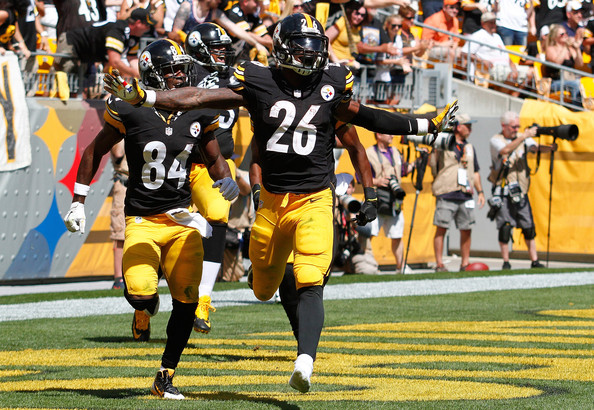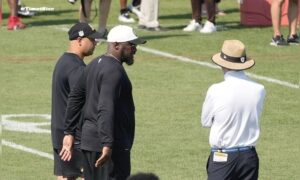Yesterday, I wrote about the Pittsburgh Steelers’ running back position and its hypothetical long-term future—not much of which is known, of course, given that neither Le’Veon Bell, DeAngelo Williams, or even Fitzgerald Toussaint are under contract for beyond the 2016 season. I wrote that, given the odd of Williams, at 34 in 2017, no longer being on the team, it would behoove the front office to consider carrying four running backs into this season.
Whether that comes through the retention of Jordan Todman as he is set to hit unrestricted free agency in a month or so or the investment in another opportunity, perhaps through the draft, as many thought that they might have done last year, having a solid option in-house as at least a number two back would not be a bad plan.
In doing this research, however, I stumbled upon the fact that it is not at all out of the ordinary for the Steelers to carry four running backs, and, in fact, it has actually been the norm rather than the exception in recent years, even if it may not have always felt as though that were the case.
Just last year, of course, the Steelers had four running backs after Bell’s suspension was over, with Bell and Williams at the top of the depth chart and Todman behind him, along with Dri Archer. Even when Bell was put on injured reserve, they initially replaced him with Isaiah Pead. Archer’s spot was not cleared until the Steelers acquired Jacoby Jones.
Oddly, in 2014, however, they did not take this approach, using Archer as the third running back on the depth chart in his rookie season. They did end up finishing the year with four running backs, but that was only because Bell got injured.
Flashing back to Mike Tomlin’s first season, the Steelers had Najeh Davenport, Gary Russell, and, of course, Willie Parker, just three running backs, but that would prove not to be the norm. Parker was later replaced by Justin Vincent due to injury. The following year, Tomlin drafted Rashard Mendenhall and signed Mewelde Moore in free agency. Russell made the 53-man roster to start as well, with Parker still remaining, of course. Russell spent 12 games on the roster in total, but Mendenhall got injured and was replaced by Davenport.
2009 was Davenport being let go as they pushed ahead with Mendenhall, Parker, and Moore, but they also added Stefon Logan from the CFL, who was brought in as a running back but ultimately became a hybrid WR/RB player in the vein of Archer, but was the primary kick and punt returner instead. In 2010, even without Parker, the Steelers remained at four with Mendenhall and Moore, as Isaac Redman, after spending a year on the practice squad, made the 53-man roster, and they also drafted Jonathan Dwyer.
The Steelers kept that core—Mendenhall, Redman, Moore, and Dwyer—in 2011, but Mendenhall’s injury at the end of that season led to the beginning of the group’s derailment. In 2012, they hoped to get by while Mendenhall was injured with Dwyer and Redman, with Moore as the complementary back, as well as Chris Rainey, the rookie fifth-rounder, and Baron Batch, a late-round pick from two years earlier, carrying five backs in total, though Mendenhall and Batch finished the year on injured reserve. Batch still played about 100 snaps in 12 games.
The following year, Mendenhall, Rainey, and Batch would all be gone, and Redman would not be there much longer, but he was on the opening day roster, and for seven weeks—as was Bell, in his rookie season, along with Felix Jones and LaRod Stephens-Howling. After the latter’s torn ACL in the opener, he was replaced by Dwyer on the 53-man roster.
As you can see, carrying at least four running backs has actually been closer to the norm for the Steelers, even under Tomlin, with the only exceptions to those rules being the 2007 and 2014 seasons. In other words, the Steelers stand a fair chance to do more to address the position this offseason than just signing a bunch of futures players. Maybe that means Todman, maybe not.








